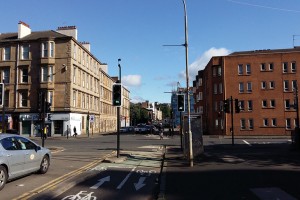Many parking-related discussions are about parking fees and about costs of (building and maintaining) parking facilities. The importance of parking is widely recognized, but car drivers are reluctant to pay even a small amount of money for parking. But when paid parking is introduced or parking fees are increased, it appears that the price-elasticity of parking demand is low.
In the heated debate about parking you will find on one side the representatives of retail-organizations, proclaiming that every cent spent on parking fees is too much and is chasing customers away. At the other side of the spectrum there will be parking operators declaring that free parking does not exist, and that parking fees are necessary to achieve a profitable business result.
Very few of these discussions are based upon research-supported facts. That is not so strange; quantitative research on this matter is rather scarce, and the results are not generally known.
This article will give some research-funded food for thought on the value of parking.
Policy-makers are waking up to the fact that cyclists and pedestrians have to be protected if multi-modality is to be a success. As a result, there is a thriving market in vulnerable road user detection but technology choice is an important factor in its success. Here, Q-Free TDC’s Colin Reekie talks about initiatives currently under way in Scotland.
Vulnerable road users — the collective term for cyclists and pedestrians — present traffic engineers with especial challenges. They are small, often numerous and often to be found in traffic monitoring situations which have complex geometries and occluded lines of vision. Modern bicycle design also means they have very little metallic content, which makes the use of inductive loop technology for their detection problematic. Bicycles are also highly likely to come off second-best in a collision with a car or larger vehicle.
Globally, as governments look to reduce overall numbers of those killed and seriously injured on roads whilst also looking to reduce transport’s environmental footprint, there is increasing recognition of the need to detect and protect vulnerable road users in crowded, multimodal traffic environments. This has implications both in terms of the types of technologies used and how it is deployed.
Q-Free TDC is currently helping local authorities in Scotland to monitor how they are supporting UK Government efforts to increase numbers of cyclists and build more sustainability and fitness into personal mobility. The national goal is to have 10 per cent of traffic in the UK be cycle-based by 2020, and so there is a real need to have specific data on how and where people are cycling.
Specifically at three sites in Glasgow, Scotland’s largest city, Q-Free TDC has provided a solution which has already been in successful operation for over a year in the Danish capital, Copenhagen. This so-called ‘Copenhagen Solution’…
Municipal parking managers have the challenging task of balancing the management of a scarce resource and providing service to a wide range of customers. The mindset is a shift from the mentality of an enforcer to that of a protector.
Enforcement is the one element of parking planning and management that people generally don’t like to discuss. People resent getting parking tickets—or getting towed—and they often associate enforcement with greed on the parts of municipal parking authorities. Why else would a city penalize parkers with fines if they weren’t trying to generate additional revenues, right? (more…)
Canada is becoming a more urban country. As Cities continue to grow and prosper, more and more people are making the choice to embrace truly urban living. This lifestyle includeas a strong preference to live close to a wide range of amenities, social activities and employment opportunities that can be accessed with short travel times. It also includes choosing to live in an urban environment consisting predominantly of apartment buildings and townhouses in a mixed use setting with grade level retail, restaurant and personal service uses and nearby employment space. This approach to urban living provides convenience for residents and also generates activity for local service business owners. If the density of the mixed use environment is high, residents will be able to walk to many activities. (more…)







